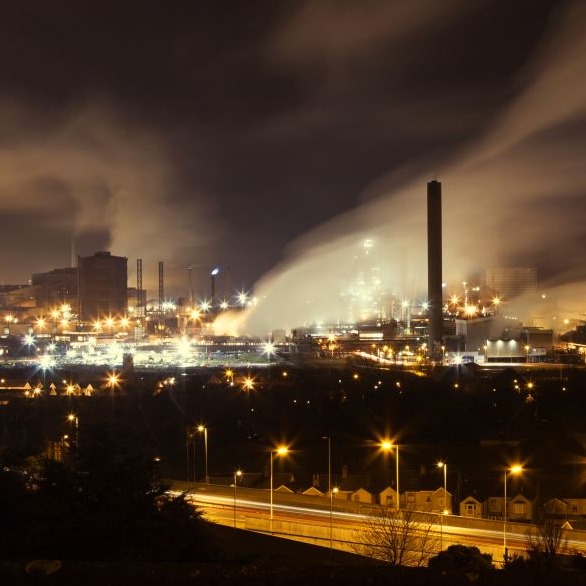Blast furnace slag is a secondary aggregate used widely in construction because of its performance attributes and durability.
Slag aggregates produced by Tarmac are supplied as CE marked products under the Factory production control process of ISO 9001:2008 for the production of products to BS EN 12342 - Aggregates for Unbound and Hydraulically Bound Mixture, BS EN 13043 - Aggregates for Unbound Bituminous mixtures and BS EN 12620 - Aggregates for concrete.
Unlike quarried aggregates, slag is produced in a batch process with the chemistry of the raw materials being tightly controlled which leads to an aggregate with a more predictable and consistent properties and chemistry.
The principle constituents of blast furnace slag are silica, alumina, calcium and magnesia (reported as oxides), which comprise 95% of slag’s total makeup. Minor elements include manganese, iron and sulphur compounds as well as trace quantities of several others. The chemical composition of slag from a given source varies within relatively narrow limits since raw materials charged into the furnace are carefully selected and blended.
Formed during the manufacture of iron, molten blast furnace slag is cooled and processed in three ways to form slag aggregates for different applications.

Applications
Air-cooling
Cooled slowly by ambient air the slag is processed into different sizes for use primarily as a construction aggregate in ready-mixed and precast concrete, asphalt, as a fill material and also as a filter media in water and sewage treatment. The largest air-cooled slag aggregate product, called riprap, is used to stabilise shorelines and stream banks and prevent erosion along slopes and embankments either loose or in gabion baskets.
Pelletising
By casting the molten slag into a cold water vapour via a rotating drum, the slag is cooled rapidly forming lightweight aggregate pellets with high fire rating properties that are perfectly suited for use in ready-mixed concrete, precast concrete and masonry. Pelletised slag can also be used for lightweight fill applications over marginal soils.
Granulation
The rapid cooling of molten slag by large quantities of water produces sand-like granule aggregate. Primarily ground into a cement replacement known as ground granulated blast furnace slag (GGBS) this is used in ready-mixed and precast concrete and masonry, floor levelling compounds and high temperature resistant building products.
